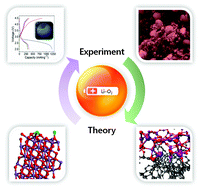Key scientific challenges in current rechargeable non-aqueous Li–O2 batteries: experiment and theory
Abstract
Rechargeable Li–air (henceforth referred to as Li–O2) batteries provide theoretical capacities that are ten times higher than that of current Li-ion batteries, which could enable the driving range of an electric vehicle to be comparable to that of gasoline vehicles. These high energy densities in Li–O2 batteries result from the atypical battery architecture which consists of an air (O2) cathode and a pure lithium metal anode. However, hurdles to their widespread use abound with issues at the cathode (relating to electrocatalysis and cathode decomposition), lithium metal anode (high reactivity towards moisture) and due to electrolyte decomposition. This review focuses on the key scientific challenges in the development of rechargeable non-aqueous Li–O2 batteries from both experimental and theoretical findings. This dual approach allows insight into future research directions to be provided and highlights the importance of combining theoretical and experimental approaches in the optimization of Li–O2 battery systems.


 Please wait while we load your content...
Please wait while we load your content...